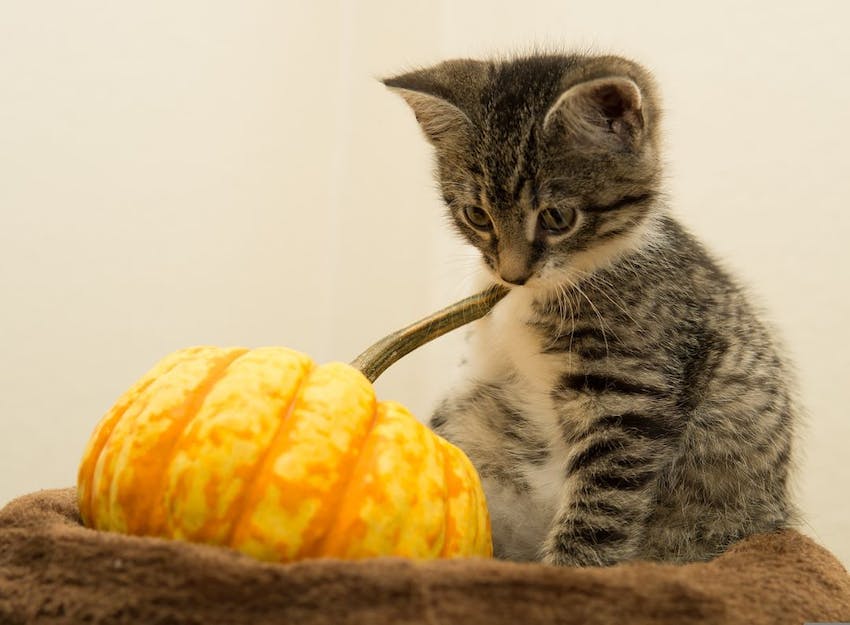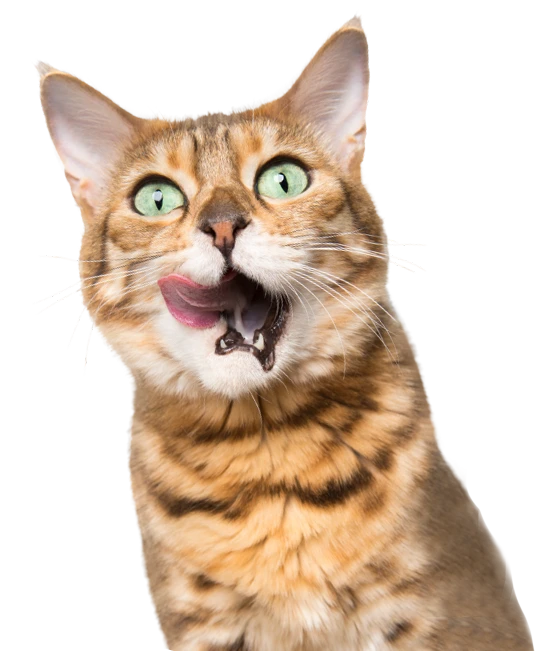Ready to help treat your pet to a healthy life?
Halloween Pet Hazards: Spooky Dangers to Avoid
By : Nikki Edwards | Updated Oct 23, 2025

Halloween is a time for costumes, treats, and spooky fun, but for pet owners, this festive holiday also comes with special risks. Many of the things that make Halloween exciting for humans can be dangerous, even life-threatening, for our furry family members. As you gear up for the festivities, it’s important to be aware of the hidden hazards that could affect your dog or cat.
10 Halloween hazards for pets
Here’s a comprehensive look at 10 common Halloween hazards for pets, with tips to help you keep your four-legged companions safe and happy during the holiday season.
1. Chocolate
Chocolate is perhaps the most infamous Halloween threat for pets, especially dogs. Chocolate contains theobromine and caffeine, two substances that pets metabolize much more slowly than humans. Even small amounts can cause symptoms such as vomiting, diarrhea, rapid breathing, increased heart rate, tremors, and seizures. Dark chocolate and baking chocolate are the most toxic, but even milk chocolate can be dangerous. If you suspect your pet has eaten any chocolate, contact your veterinarian immediately. Keep all candy bowls, treat bags, and trick-or-treat stashes well out of reach.
2. Candy (especially sugar-free & xylitol)
Halloween is synonymous with sweets, and sugar-free candies are increasingly popular. However, many sugar-free gums, candies, and baked goods contain xylitol—a sugar substitute that is extremely toxic to dogs. Even a small amount can cause a dangerous drop in blood sugar (hypoglycemia), seizures, liver failure, or death. Symptoms can develop within 15–30 minutes. Even candy wrappers can pose a risk if swallowed, leading to choking or intestinal blockages. Always dispose of wrappers in a secure trash bin and keep all sweets out of reach.
3. Raisins and grapes
Raisins and grapes often appear in Halloween trail mixes, baked goods, or as “healthier” treat options. For reasons not fully understood, these fruits can cause acute kidney failure in dogs and, less commonly, in cats. Toxicity can occur even with small amounts, and symptoms include vomiting, lethargy, loss of appetite, and increased thirst or urination. Be vigilant about treats or snacks that may contain raisins and grapes and keep them safely stored away from pets.
4. Costumes
Dressing up pets in costumes can be adorable, but it’s not always safe. Ill-fitting costumes can restrict movement, breathing, or vision. Costumes with dangling parts, buttons, beads, or sequins can be chewed off and swallowed, causing choking or intestinal blockages. Tight elastics can cut off circulation, and some fabrics may cause allergic reactions. If you dress up your pet, always supervise them, ensure the costume fits comfortably, and remove it at the first sign of distress or discomfort. Some pets simply do not tolerate costumes and should not be forced to wear them.
5. Decorations (cords, candles, fake spider webs)
Halloween decorations add atmosphere but can be hazardous for curious pets. Chewing on electrical cords can result in burns or potentially fatal electric shock. Real candles in jack-o’-lanterns or lanterns can be knocked over by wagging tails or curious noses, causing burns or fires. Fake spider webs, tinsel, and small decorative pieces can be ingested, leading to serious intestinal blockages or choking hazards. Always secure cords, use battery-powered candles, and keep small or stringy decorations out of reach.
6. Doorbells, visitors, and open doors
Halloween brings a steady stream of visitors and constant doorbell ringing, which can be very stressful for pets. Dogs and cats may become anxious, bark excessively, or attempt to escape through frequently opened doors. Pets that are fearful or territorial may even act aggressively toward costumed visitors. To prevent stress and the risk of escape, consider keeping your pet in a quiet, secure room with their favorite toys, water, and a comfy bed while trick-or-treating is underway. For pets that are especially anxious, talk to your veterinarian about calming strategies or products.
7. Pumpkins and decorative corn
Pumpkins and decorative corn are popular Halloween decorations, but they can pose problems if pets decide to nibble on them. While plain, cooked pumpkin can be a healthy treat for dogs in moderation, raw pumpkin, pumpkin stems, rind, and decorative gourds can cause gastrointestinal upset or, if eaten in large pieces, intestinal blockage. Decorative corn and dried corn cobs are especially risky, as they can be difficult to digest and may cause choking or obstruction. Moldy pumpkins or corn left outdoors can also harbor dangerous mycotoxins.
8. Seasonal foods and baked goods
Autumn brings a variety of seasonal treats, many of which are dangerous for pets. Baked goods may contain chocolate, raisins, macadamia nuts, nutmeg, cloves, or even alcohol, all of which are toxic to dogs and cats. Nutmeg and cloves, often used in pumpkin spice treats, can cause hallucinations, seizures, and liver toxicity in pets. High sugar and dairy content can lead to stomach upset, diarrhea, or pancreatitis. Even ingredients that seem harmless to us, like certain sweeteners or flavorings, can hide deadly dangers for pets. When in doubt, don’t share baked goods or table scraps with your pet.
9. Glow sticks and light-up accessories
Glow sticks, necklaces, bracelets, and other light-up accessories are popular Halloween safety items for trick-or-treaters, but they’re very tempting for pets as chew toys. The liquid inside glow sticks is generally considered low in toxicity, but it tastes bitter and can cause drooling, foaming at the mouth, vomiting, and agitation if ingested or chewed. The plastic casing, if swallowed, can also present a choking hazard or cause intestinal blockage. If your pet gets into a glow stick, gently rinse their mouth with water and offer a small treat, then contact your vet for further advice.
10. Batteries (button or coin cell batteries)
Small batteries, such as button or coin cell batteries, are commonly found in battery-operated Halloween decorations, flashing jewelry, and light-up costumes. If swallowed, these batteries can become lodged in the esophagus or digestive tract and cause severe burns or tissue damage in as little as two hours due to their electrical current and highly corrosive contents. Signs of battery ingestion include drooling, pawing at the mouth, difficulty swallowing, and vomiting. Battery ingestion is a life-threatening emergency—seek immediate veterinary care if you suspect your pet has swallowed a battery.

Protect your pet throughout the year
Halloween should be a time of fun and celebration for the whole family, including your pets. By being aware of these 10 common hazards, you can take steps to keep your pets safe and comfortable. Keep candies and decorations out of reach, supervise pets around costumes and visitors, and create a calm retreat for your animals during the busiest trick-or-treating hours. If you suspect your pet has ingested something harmful or is behaving unusually, contact your veterinarian or an emergency animal clinic right away.
With just a little extra care, you and your furry friends can have a safe and spooktacular Halloween!
